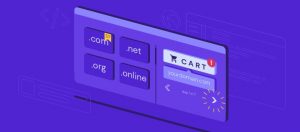You’ve likely wondered what your students truly experience during their school day, beyond the glimpses you catch during your own classes. The Shadow a Student Challenge offers you a compelling way to step into their shoes and gain authentic insights that traditional observations can’t provide. As you follow a student from their first morning bell to dismissal, you’ll uncover unexpected challenges, social dynamics, and learning barriers that might surprise you. What you’ll discover through this immersive experience won’t just change your perspective—it’ll transform how you approach teaching and support your students’ success.
Why Shadow Students
Educators regularly seek effective ways to improve student experiences and learning outcomes. By shadowing students, you’ll gain direct insights into their daily challenges, interactions, and learning environments. This evidence-based approach lets you identify barriers to engagement, assess instructional effectiveness, and understand social dynamics that impact academic performance.
insights into their daily challenges, interactions, and learning environments. This evidence-based approach lets you identify barriers to engagement, assess instructional effectiveness, and understand social dynamics that impact academic performance.
You’ll discover opportunities for meaningful improvements that might otherwise go unnoticed through traditional observation methods.
The Program in Action
To join the Shadow a Student Challenge, participants select one student to follow throughout an entire school day, experiencing every class, break, and activity from the learner’s perspective. You’ll observe and document the student’s interactions, engagement levels, and challenges. After shadowing, you’ll analyze your findings, identify areas for improvement, and develop actionable strategies to enhance the learning environment based on your firsthand observations.
Key Benefits for Educators
While traditional professional development often relies on theoretical frameworks, participating in the Shadow a Student Challenge offers educators concrete, experiential insights that transform their teaching practices. You’ll gain firsthand understanding of students’ daily challenges, identify barriers to learning, and discover opportunities for improvement. This immersive experience helps you develop empathy, refine instructional strategies, and make data-driven decisions to enhance student outcomes.
Implementing Change Through Insights
Insights gathered from shadowing students become actionable through systematic implementation of targeted changes. You’ll need to analyze your observations methodically, identifying patterns and pain points in students’ daily experiences. Transform these findings into concrete action steps by prioritizing issues, developing specific solutions, and creating measurable goals. Track your implemented changes to ensure they’re effectively addressing the challenges you’ve observed.
 If you’re pursuing an IT certification while juggling work and life commitments, you’ve likely discovered that time isn’t always on your side. You’ll face unique challenges as you navigate through technical content, hands-on labs, and practice exams—all within a self-paced environment that demands exceptional self-discipline. While many certification candidates focus solely on mastering technical concepts, your success actually hinges on something more fundamental: your ability to manage time effectively. The strategies you choose to implement now won’t just determine your certification outcome; they’ll shape your entire professional development journey.
If you’re pursuing an IT certification while juggling work and life commitments, you’ve likely discovered that time isn’t always on your side. You’ll face unique challenges as you navigate through technical content, hands-on labs, and practice exams—all within a self-paced environment that demands exceptional self-discipline. While many certification candidates focus solely on mastering technical concepts, your success actually hinges on something more fundamental: your ability to manage time effectively. The strategies you choose to implement now won’t just determine your certification outcome; they’ll shape your entire professional development journey.
